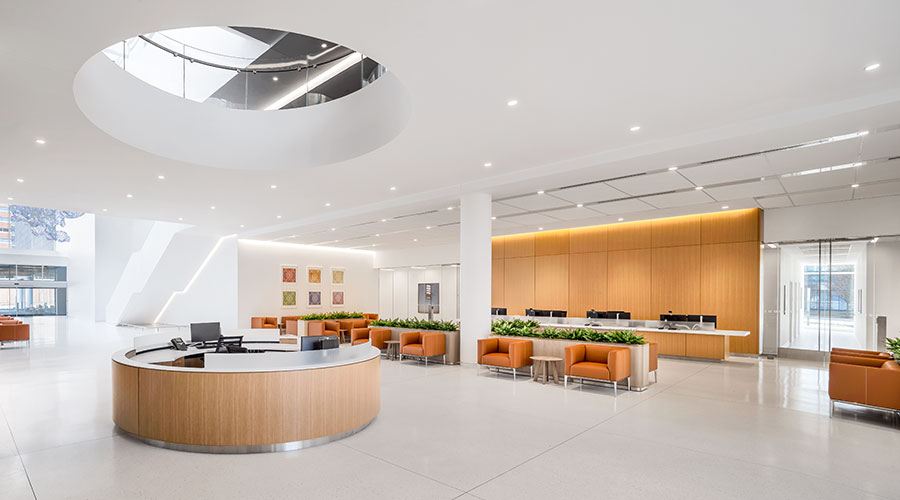Hospital-acquired (nosocomial) infections are a huge safety concern across all healthcare facilities; recently, these infections, including the well-known Legionnaires, have become more common and widespread.
In the last decade, the number of people getting sick from Legionella bacteria in healthcare and hospital environments has substantially increased creating new risks for hospital patients who, in many cases, are more susceptible.
Regulatory agencies and the public have demanded something be done to protect everyone in these healthcare environments. A high frequency of nosocomial infections is evidence of poor quality control in facilities and leads to increased costs, which can be avoided with the right action and monitoring technology. These regulatory agencies are pushing healthcare facilities to enhance monitoring of risk factors with auditable and actionable risk mitigation. Compliance is no longer a “nice to have” but is now a “need to have” for continued hospital accreditation and Medicare / Medicaid funding.
To contain and mitigate the spread of infectious diseases, healthcare facilities are focused on creating an environment that is comfortable for patients but also slows the growth of infectious bacteria. Water and air systems are the core focus of these efforts, as small issues within both systems can quickly turn into larger concerns that could accelerate the spread of legionella and other bacteria inside and outside of a hospital. To help ensure that these water and air systems are not spreading harmful bacteria, smarter continuous monitoring-based commissioning systems are now becoming the standard, providing hospitals with real-time transparency into the issues that exist and how to best address them.
Public health is jeopardized by infectious disease outbreaks
Legionella bacteria is becoming increasingly commonplace in hospitals and healthcare facilities. Recent reports from Legionnaires Disease News found that from July to December 2018, Legionella bacteria was detected in multiple hospitals and recreational facilities across the United States. These recent outbreaks made headlines, with thousands of victims that fell ill, and hundreds of reported deaths from the bacteria. The Public Health Insider reports that “about 1 out of 10 people who get Legionnaires’ disease will die from the infection”[1]
The CDC has reported that 9 out of 10 of the infections acquired in a health care setting could have been prevented with better water management.[2] There are numerous factors that healthcare facility management staff need to consider in order to maintain a healthy environment that slows bacteria growth. In water management specifically, fluctuations in water temperature, humidity and pH; changes in water pressure; and water stagnation with low to no water flow can promote the growth of Legionella and other bacteria. These factors must be regularly monitored with detailed water management plans on how to resolve when issues are found.
Compliance is now mandatory
In 2017, the U.S. Centers for Medicare & Medicaid Services (CMS)[3] began enforcing a federal requirement to reduce the risk of this bacteria through monitoring of water management systems; today, Legionella water management programs are an industry standard for large buildings in the United States. Many states also have specific state guidelines that healthcare facilities are expected to meet, and regular auditing to ensure compliance. To reduce the risk of this bacteria, the recommended approach is the ASRAE risk management guidelines for water management programs.[4]
The Joint Commission, in their surveys, look for evidence of compliance with the ASHRAE Standard 188 and the CDC’s recommendation for reducing Legionella growth in buildings; including risk assessments and having an existing water management program. These water management programs can vary, but must include how the facility monitors, tests, acts, and audits against the findings. A lack of compliance can shut down areas within your facility or eliminate funding provided to the hospital.
In addition to these water management plans designed for prevention and control of healthcare-associated pneumonia, the CDC, for a decade, has also recommended monitoring of the ventilation system with continuous monitoring for air change rates and pressure fluctuations for any positive airflow area.[5] Coupling enhanced monitoring systems for HVAC, with specific focus on air turns and water flows, are all necessary to mitigate bacterial risks.
Maintaining compliance through continuous monitoring
The Joint Commission and CDC now recommend that high risk areas have regular monitoring of temperature, humidity, pressure, water flow, and air flow. Having access to the right data at the right time, in context of how it’s used, is critical for providing an accurate diagnosis of an issue, so engineering and maintenance personnel can more effectively correct it.
Basic asset monitoring is an option that has been available to many hospital and healthcare facility managers for a while, however, it tends to promote a reactive approach to analysis as data is usually only accessed for diagnosis after a problem has already occurred. All hospitals and healthcare facilities would prefer to prevent these issues from occurring in the first place, to avoid timely and costly inconveniences to patient comfort and more devastating consequences such as facility shut downs or risks to patient safety.
By moving to a more proactive approach, many healthcare facilities have shifted from basic asset monitoring to continuous monitoring, allowing the equipment to continuously communicate when thresholds are not met and proactively notify the right people of existing or potential issues to diagnose.
This approach is much more effective for directing immediate attention on the problem; however, continuous monitoring has brought with it the realization that there are often a lot more problems than expected. When continuous monitoring was initially introduced, the overwhelming amount of notifications resulted in many alerts that went ignored, and the investigation to find out which ones should be prioritized and investigated was taking valuable time away from the actual investigation of the real issues. Continuous monitoring was a great start to proactively identify issues, but the systems still had to be made smarter to eliminate the “noise”.
The first step in creating the “smarter” continuous monitoring system has been making a move from continuously monitoring the equipment to continuously monitoring the system. Monitoring all available system data from upstream and downstream contributors, as well as understanding the interaction of AHUs and their terminal devices; heat exchangers, cooling towers, as well as hot-water and cold-water systems, ensures an understanding of the state of the working systems, not just the state of isolated equipment.
This step moves us from having “data” for diagnosis, to providing us with actionable information that can be used to make better informed decisions. It is the first big step toward infectious disease prevention and many facilities are already there. Without smarter continuous monitoring systems, facility managers and engineers will often spend more money and time than is necessary just finding the actual issue, and then additional time chasing the cause of that issue. Every moment spent doing this can jeopardize the lives of patients, staff and visitors.
Targeting critical zones with air optimization analytics
Over the last several years, continuous monitoring-based commissioning systems, with built in commissioning metrics and analytics have gradually become the standard. These systems are enabling hospital and healthcare facility management staff to identify the highest priority issues across their facilities and provide the necessary focus on the critical zone areas. Healthcare environments specifically seek to control the temperature, airflow, air turns, pressure, and humidity in and out of these critical zones, to prevent the growth of bacteria. These continuous monitoring-based commissioning systems with air optimization do that automatically, with notifications of actionable steps for nosocomial risk mitigation.
Using a continuous monitoring-based commissioning system helps to keep equipment in control, lower maintenance and energy costs, increase the life of equipment, and ensure all aspects of HVAC systems are working together. Continuous monitoring-based commissioning, with air optimization Analytics also ensures that systems and equipment that are supplying those critical areas are operating within set parameters, increasing efficiency while saving money and mitigating the growth and spread of bacteria, providing the balance between saving money and keeping patients safe.
Continuous monitoring-based commissioning has led to more informed and efficient decisions being made in the healthcare sector. New advancements in continuous monitoring have allowed for hospitals and healthcare facilities to minimize infectious disease risks and maintain a safe and healthy environment for patients, staff and visitors.
[1] https://publichealthinsider.com/2018/05/23/patient-at-local-hospital-diagnosed-with-legionnaires-disease/

 Should We Be Testing Toilet Water in Patient Restrooms?
Should We Be Testing Toilet Water in Patient Restrooms? Healthcare Union Petitions for Increased Staff Safety at HCA Florida Hospitals
Healthcare Union Petitions for Increased Staff Safety at HCA Florida Hospitals HGA Announces Completion of the Jeffrey and Patricia Cole Pavilion
HGA Announces Completion of the Jeffrey and Patricia Cole Pavilion Healthcare Facilities Look to Future-Proof Facilities
Healthcare Facilities Look to Future-Proof Facilities Yale New Haven Health Experiences Data Breach
Yale New Haven Health Experiences Data Breach